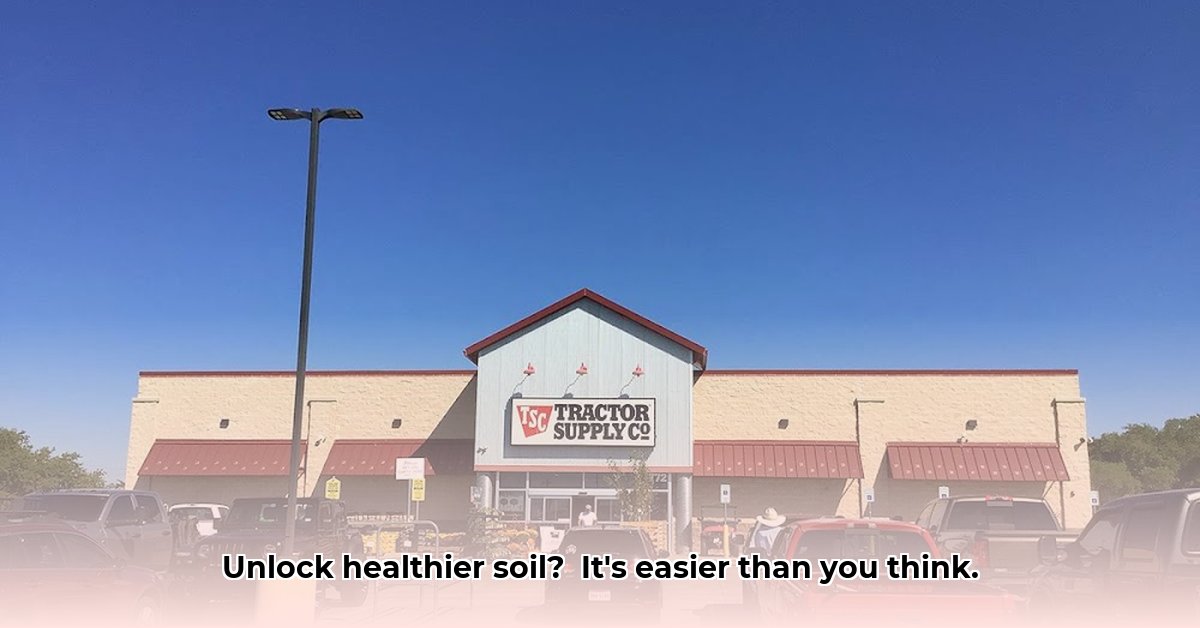
Improving soil health is crucial for maximizing crop yields and building a sustainable farming operation. Hydrated lime, particularly dolomitic limestone, plays a vital role in correcting soil acidity and providing essential nutrients. Tractor Supply offers both pulverized and pelletized forms of dolomitic limestone, each with its own advantages and disadvantages. This guide will help you choose the right product and application method for your specific needs. For more information on pelletized lime, check out Tractor Supply's resources.
Understanding Dolomitic Limestone: A Soil Nutrient Booster
Dolomitic limestone is a natural soil amendment rich in calcium (Ca) and magnesium (Mg), two essential macronutrients crucial for plant growth and overall soil health. These minerals not only directly nourish plants but also improve soil structure, water retention, and nutrient availability. A well-structured soil allows for better root penetration, leading to healthier, more vigorous plants. Using dolomitic limestone can lead to significant improvements in crop yields and overall soil quality. However, optimal application rates depend heavily on soil type and existing nutrient levels.
Pulverized vs. Pelletized Dolomitic Limestone: A Comparative Analysis
Choosing between pulverized and pelletized dolomitic limestone depends on your farm's size, your budget, and your available equipment. Both provide similar nutrient benefits, but their application methods differ significantly.
| Feature | Pulverized Dolomitic Limestone | Pelletized Dolomitic Limestone |
|---|---|---|
| Form | Fine powder | Small pellets |
| Application | Requires specialized equipment; can be dusty and messy | Easier to spread; less messy and more precise application |
| Cost | Generally less expensive per pound | Typically more expensive per pound |
| Handling | More challenging; potential for dust inhalation | Easier and cleaner; less dust |
| Reaction Speed | May react faster initially due to increased surface area | Generally a slower initial reaction, but potentially providing a more consistent long-term effect |
| Best Suited For | Large-scale operations with appropriate spreading equipment | Smaller farms, gardens, or targeted applications; easier hand application |
Choosing the Right Lime: For large farms, the lower cost per pound of pulverized lime might outweigh the added cost and complexity of specialized spreading equipment. Smaller farms or home gardens will likely find pelletized lime more convenient and easier to manage. Isn't it important to consider the total cost—including labor and equipment—when making your decision?
A Step-by-Step Guide to Applying Dolomitic Limestone
Effective lime application hinges on proper planning and execution. Follow these steps for optimal results:
Soil Testing: Before purchasing any lime, conduct a soil test to determine the precise amount of lime needed. This critical first step ensures efficient use of resources and prevents over- or under-application. The local agricultural extension office or a private lab typically offers soil testing services. Isn't accurate soil testing the foundation of effective lime application?
Calculating Lime Requirements: Based on your soil test results and the lime product's packaging instructions, calculate the precise amount of dolomitic limestone needed. Note that different soil types and crop requirements may call for varying application rates.
Lime Application: Use a spreader appropriate for the lime type you select – a specialized spreader for pulverized lime and a standard spreader or even manual application for pelletized lime. Consistent spreading ensures even distribution and optimal effectiveness. How crucial is even application for maximized benefits?
Incorporating the Lime: After application, thoroughly till or incorporate the lime into the top few inches of the soil. This ensures the lime comes into effective contact with the soil particles, accelerating its action.
Monitoring and Maintenance: Regularly monitor your soil conditions and plant health. Periodic soil testing is advisable to track the effects of the lime application and adjust future applications accordingly. Is consistent monitoring key to long-term soil health management?
Maximizing Your Investment: Long-Term Soil Health
Remember, using dolomitic limestone is an investment in long-term soil health. By selecting the appropriate type and applying it correctly, you'll contribute to improved soil structure, enhanced nutrient availability, and healthier, more productive plants. Remember to consult with your local agricultural extension office or visit Tractor Supply for expert advice tailored to your specific location and farming practices. Does a comprehensive approach to soil management truly maximize your return on investment?